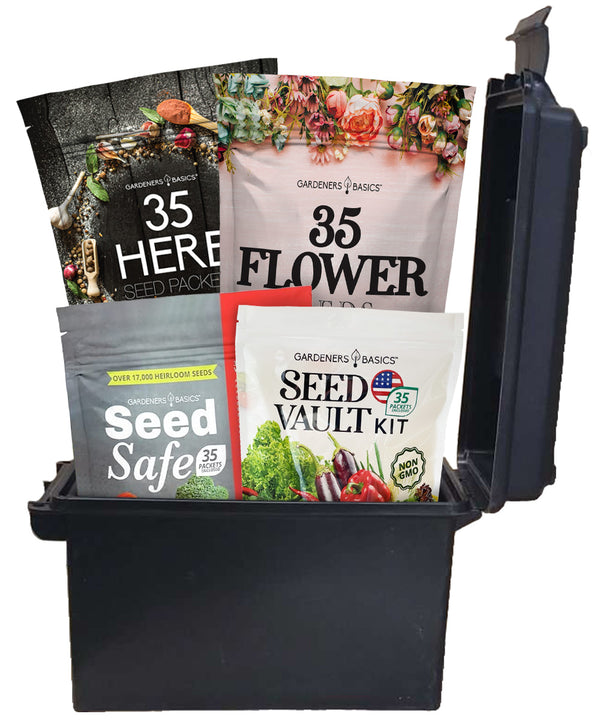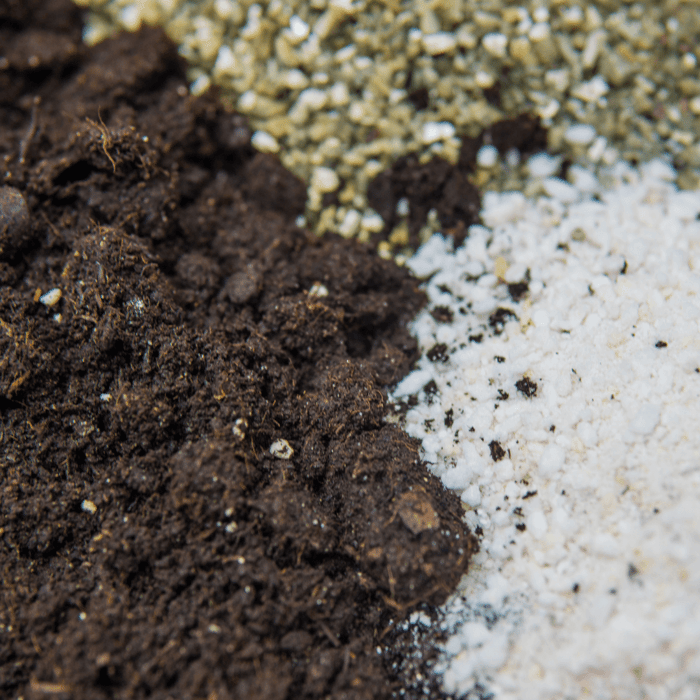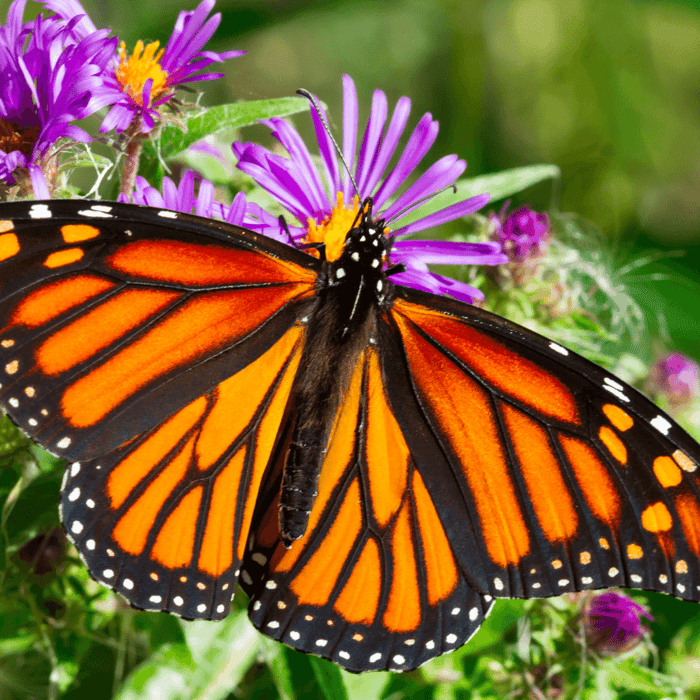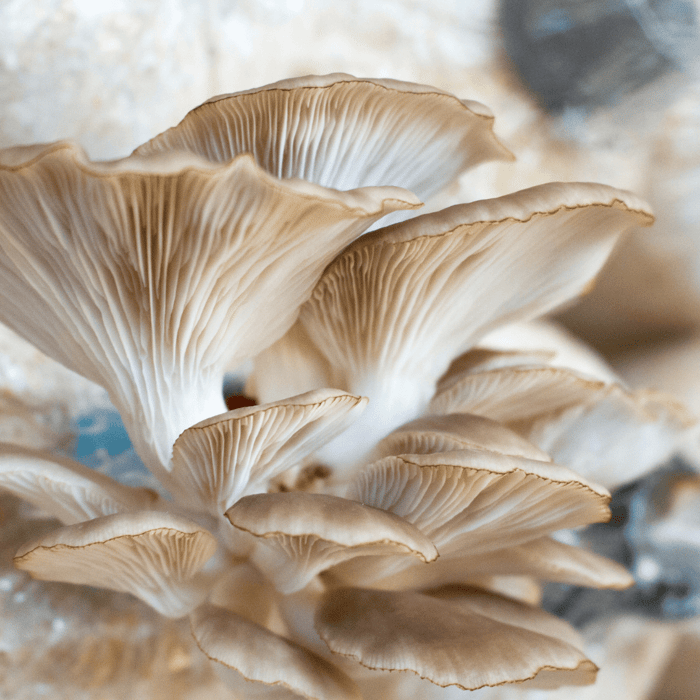With gardening, the right soil mixture can make all the difference in how a plant grows and thrives. Perlite and vermiculite are two additives popular with many gardeners due to their unique properties. These additives improve soil aeration, drainage, and water retention. In this article, we will explore the characteristics of perlite vs vermiculite and determine which is better for your horticultural needs.
Definition of Perlite and Vermiculite
Perlite is an amorphous volcanic glass heated to create a lightweight, porous material. The process causes the perlite to expand up to 20 times its original size, creating tiny pockets of air that aid in water retention and soil aeration.
Perlite is usually white or light gray and has a neutral pH. Vermiculite, on the other hand, is a natural mineral that undergoes exfoliation when heated.
The exfoliation process causes the mineral layers to open like an accordion, resulting in a lightweight material with excellent water retention capabilities. Vermiculite is typically brown or gold and has a slightly alkaline pH.
Importance of Perlite and Vermiculite in Horticulture
Perlite and vermiculite are widely used as soil amendments because they improve plant growth conditions. When added to potting mixes, they help regulate moisture levels by enhancing drainage and aerating roots by preventing compaction.
In addition to their physical properties, perlite and vermiculite also offer many other benefits when used in horticulture: - They promote faster seed germination and rooting.
- They help reduce the risk of root rot and other soil-borne diseases. - They can be used as a carrier for fertilizers or pesticides to improve their effectiveness.
The benefits of perlite vs vermiculite ultimately depend on the specific application, plant species, and growing conditions. In the following sections, we will explore each additive's properties, uses, advantages, and disadvantages in greater detail to help you decide on your horticultural needs.
Perlite
Definition of Perlite
Perlite is a natural volcanic glass that has been expanded by heating to produce a lightweight, porous material. It comprises small, white, spherical particles often used as a soil amendment in horticulture.
Perlite is formed when lava cools and solidifies quickly, trapping water molecules within the rock. When heated to high temperatures (around 1600°F), the trapped water vaporizes, causing the perlite to expand up to 20 times its original size.
Properties of Perlite
Perlite is an excellent soil amendment because it has several beneficial properties. First and foremost, it provides excellent drainage due to its porous nature.
This helps prevent water-logged soil, which can lead to root rot and other fungal diseases. Additionally, perlite is lightweight and does not compact over time like other soil amendments such as sand or gravel.
This allows for good air circulation around plant roots which promotes healthy growth. Perlite does not contain any harmful chemicals or toxins that could harm plants.
Vegetable Seed Vault Kit | 35 Variety Pack

$29.95
$49.95
Ultimate Survival Seed Vault: 16,000+ Non-GMO Heirloom Vegetable Seeds for Emergency Preparedness Introducing the Seed Vault Kit, your all-in-one solution for emergency preparedness and sustainable gardening. This premium seed kit contains over 16,000 non-GMO, Heirloom, Non-Hybrid, and Open Pollinated seeds,… read more
Uses of Perlite in Horticulture
Perlite has many uses in horticulture, including but not limited to hydroponics systems for growing plants without soil (known as aeroponics and aquaponics),
seed starting mixtures,
container gardens such as
raised garden beds or
potted plants for indoor use or outdoor use on porches or patios; and landscaping projects where it can be used as a top dressing around plants that need improved drainage.
Advantages of Using Perlite
One of the main advantages of using perlite in horticulture is its ability to improve soil drainage without adding extra weight like sand or gravel, which can disrupt root growth if they become compacted over time. The lightweight nature makes it easy to transport and mix with soil by hand without causing pain or strain.
Perlite is inexpensive to other soil amendments and can be purchased in bulk. Another advantage of using perlite is that it contains no harmful chemicals or toxins that could harm plants.
This makes it a safe option for growing organic produce, herbs, and flowers. Perlite is a renewable resource that can be heated and expanded indefinitely.
Disadvantages of Using Perlite
One potential disadvantage of perlite is that it may not provide enough nutrients for some plants, which require more nutrient-rich soils. Additionally, Perlite tends to float when used in hydroponic systems, which means it may need to be contained within mesh bags or other types of containers to prevent clogging in the system's plumbing. Large-scale use of perlite can create environmental concerns due to the amount of energy required to heat and expand the rock before use in horticulture.
Vermiculite
Definition of Vermiculite
Vermiculite is a mineral that forms from the weathering of mica and other minerals. It is a member of the phyllosilicate group of minerals, including clay minerals. Vermiculite has a layered structure and can expand up to 30 times its original size when heated due to the water molecules trapped between its layers.
Properties of Vermiculite
Vermiculite has several unique properties that make it useful in horticulture. It has excellent water-holding capacity, which allows it to hold onto moisture for extended periods.
This property makes it ideal for use in soils requiring regular watering, such as container plants or indoors. Another important property of vermiculite is its ability to provide good aeration to plant roots.
Its porous structure allows air to circulate freely around the roots, preventing them from becoming waterlogged or suffocated. Vermiculite is also lightweight and easy to handle, making it an ideal choice for use in potting mixes or as a soil amendment.
Uses of Vermiculite in Horticulture
Vermiculite has several uses in horticulture, including: - As a potting mix ingredient: Vermiculite can be used in potting mixes to improve their water-holding capacity and aeration.
As a soil conditioner: Adding vermiculite to garden soil can improve its structure and drainage.
Seed starting: Vermiculite can be used as a planting medium for starting seeds indoors. - Hydroponics: Vermiculite can be a growing medium in hydroponics systems.
Advantages and Disadvantages of Using Vermiculite
Like perlite, vermiculite has both advantages and disadvantages when used in horticulture.
Advantages:
- Excellent water-holding capacity: Vermiculite can hold onto moisture for extended periods, which is beneficial for plants that require regular watering.
- Good aeration: Its porous structure allows air to circulate freely around the roots, preventing them from becoming waterlogged or suffocated. - Lightweight: Vermiculite is easy to handle and can be used in potting mixes or as a soil amendment.
Disadvantages:
- High cost: Vermiculite can be expensive compared to other soil amendments or growing mediums.
- Non-renewable resource: Vermiculite is a non-renewable resource mined from the earth, raising concerns about sustainability.
- Potential health risks: Some vermiculites may contain asbestos fibers, posing health risks if inhaled.
It is essential to choose sources of vermiculite that are certified as asbestos-free. Vermiculite is a helpful mineral with several unique properties that make it valuable in horticulture.
However, it has some potential drawbacks that should be considered before use. As with perlite, careful consideration of the specific needs of your plants and growing conditions should guide your choice of whether to use vermiculite as a soil amendment or growing medium.
Ultimate Survival Seed Kit: 140 Varieties for Self-Sufficient Gardens & Food Storage

$109.95
$199.95
Ultimate Survival Seed Kit – 140 Variety Pack for Self-Sustaining Gardens, Long-Term Food Storage & FREE Ammo Can for Secure Storage Introducing the Ultimate Survival Seed Kit — your all-in-one solution for sustainable gardening, survival prepping, and self-sufficient living! This… read more
Comparison between Perlite vs Vermiculite
Physical Differences:
Perlite is a volcanic glass that is formed when lava cools quickly. The glass has high water content, and when heated to high temperatures, the water trapped inside expands and causes the perlite to expand up to 20 times its original size.
This makes it very lightweight with a low bulk density. Perlite particles are white or light gray in color and have a porous surface.
On the other hand, vermiculite is formed from minerals that are mined from rocks. It is composed of hydrated magnesium aluminum silicate minerals that appear as mica.
Vermiculite particles are flat, shiny, and have layers that can be separated like sheets of paper. They are dark brown or gold in color with a smooth surface.
Chemical Differences:
Perlite has a neutral pH of around 7.0, which means it will not affect the pH level of soil or growing medium used in horticulture applications. It also contains no nutrients, so it will not affect fertilization levels either.
Vermiculite has a slightly alkaline pH level between 7.0 and 9.5, depending on the source it was mined from. This can increase the alkalinity of soil or growing medium over time if used excessively without balancing acids like sulfur or peat moss to maintain an acidic level for plant growth.
Performance Differences:
Perlite provides excellent plant drainage while retaining some moisture due to its porous structure, which allows airflow through root systems and promotes healthy growth rates by providing more oxygen for root development. Vermiculite provides good moisture retention because it absorbs water like a sponge holding up to four times its weight in water, which is ideal for drought-prone regions where there may be less rainfall, and plants need water to survive. While perlite is suitable for hydroponic systems or soil-based gardening, vermiculite is best for greenhouse culture where regular watering or irrigation may not be feasible due to climate, location, or limited water resources.
Conclusion:
Both perlite and vermiculite are useful horticulture tools with different physical and chemical properties that cater to various plant needs. The choice of perlite vs vermiculite depends on the specific needs of the plant or growing environment. Perlite provides excellent drainage for plants, while vermiculite provides good moisture retention.
Both are lightweight materials that can help reduce soil compaction when used as a container-growing medium. Ultimately, the best action is to test your soil pH level and understand your plants' needs before investing in either perlite or vermiculite products.
Conclusion
Summary of the Differences between Perlites vs Vermiculites
Perlite and vermiculite are valuable horticultural materials that have been used for decades. They both possess unique properties that make them ideal for certain applications.
Perlite is a lightweight, porous material with excellent drainage properties, while vermiculite is an absorptive material with good nutrient retention ability. Understanding the differences between these materials can help gardeners, farmers, and horticulturists to choose the best option for specific applications.
Recommendation for the Best Option to Use in Specific Horticultural Applications
The choice between perlite and vermiculite depends on several factors, such as soil type, plant species, and growing conditions. Generally, perlite is best used in sandy or clay soils since it improves drainage and prevents soil compaction.
It is also ideal for plants that require high oxygen levels, such as succulents or cacti. On the other hand, vermiculite is best used in soils with poor water retention ability since it acts as a sponge by absorbing water and nutrients from the soil.
It also enhances the germination rates of seeds and root growth of young plants. For planting containers, perlite can be mixed into potting mixes to improve drainage and prevent waterlogging, which can cause root rot in plants.
Vermiculite can be added to potting mixes to improve moisture retention during hot weather, which helps reduce watering frequency. In hydroponics systems where the soil isn't used, perlite can be used as a growing medium due to its porosity. At the same time, vermiculite can be utilized in drip irrigation systems due to its ability to retain large amounts of water, thereby reducing frequent watering.
Optimistic Spin on the Material that Leaves the Reader Feeling Good
By utilizing perlite and vermiculite properly, horticulturists can create an ideal growing environment for their plants that maximizes yield and minimizes water usage. Using these materials in agriculture also has positive environmental impacts since it reduces the need for excessive watering, which can lead to soil erosion and reduced water availability.
In addition, it helps maintain plant health by preventing soil compaction and providing adequate moisture levels, which leads to increased crop yields. Perlite and Vermiculite are useful materials with unique properties that make them valuable assets in horticulture.
Understanding their characteristics is important when selecting the best option for specific growing conditions. With proper usage of both materials, horticulturists can grow healthy plants with higher yields with a positive environmental impact.
 Perlite vs Vermiculite FAQ
Perlite vs Vermiculite FAQ
Q: What are perlite and vermiculite?
A: Perlite is a lightweight, white, or light-grey volcanic glass used to improve soil aeration and drainage. Vermiculite is a golden-brown mineral that enhances soil's water retention and nutrient exchange.
Q: How are perlite and vermiculite made?
A: Perlite is made by heating volcanic glass, causing it to expand and become lightweight. Vermiculite is made by heating the mineral mica, which expands and becomes lightweight and absorbent.
Q: What are the main differences between perlite and vermiculite?
A: Perlite is better for improving soil aeration and drainage, while vermiculite excels at retaining water and nutrients. Perlite has a porous, irregular surface, and vermiculite has a layered, golden-brown appearance.
Q: When should I use perlite?
A: Use perlite when you need to improve soil aeration and drainage, such as in potting mixes, garden beds, or for plants that require well-draining soil.
Q: When should I use vermiculite?
A: Use vermiculite to increase water retention and nutrient exchange in soil, such as for seed starting mixes, potting soil, or plants that require consistently moist conditions.
Q: Can I use perlite and vermiculite together?
A: Yes, you can use perlite and vermiculite to create a custom soil blend that combines the benefits of both materials. This can help balance aeration, drainage, water retention, and nutrient exchange in the soil.
Q: Are perlite and vermiculite safe for organic gardening?
A: Both perlite and vermiculite are considered safe for organic gardening. They are natural, mineral-based materials that do not contain harmful chemicals or synthetic additives.
Q: How much perlite or vermiculite should I add to my soil?
A: The amount of perlite or vermiculite to add depends on your specific soil conditions and the needs of your plants. Generally, a mix of 10-20% perlite or vermiculite by volume is recommended. However, always consult the specific requirements of the plants you are growing and adjust the proportions accordingly.
Q: Can perlite or vermiculite be reused?
A: Yes, both perlite and vermiculite can be reused. However, it's essential to sterilize them before reusing them to eliminate potential pathogens or pests. To sterilize, soak the materials in a 10% bleach solution for 30 minutes, rinse thoroughly, and allow them to dry before using them again.
Q: Are there any alternatives to perlite and vermiculite?
A: There are alternatives to perlite and vermiculite, such as coconut coir, pumice, expanded clay pebbles, and rice hulls. Each alternative has benefits and drawbacks, so choose the one that best suits your gardening needs.


 Perlite vs Vermiculite FAQ
Perlite vs Vermiculite FAQ





